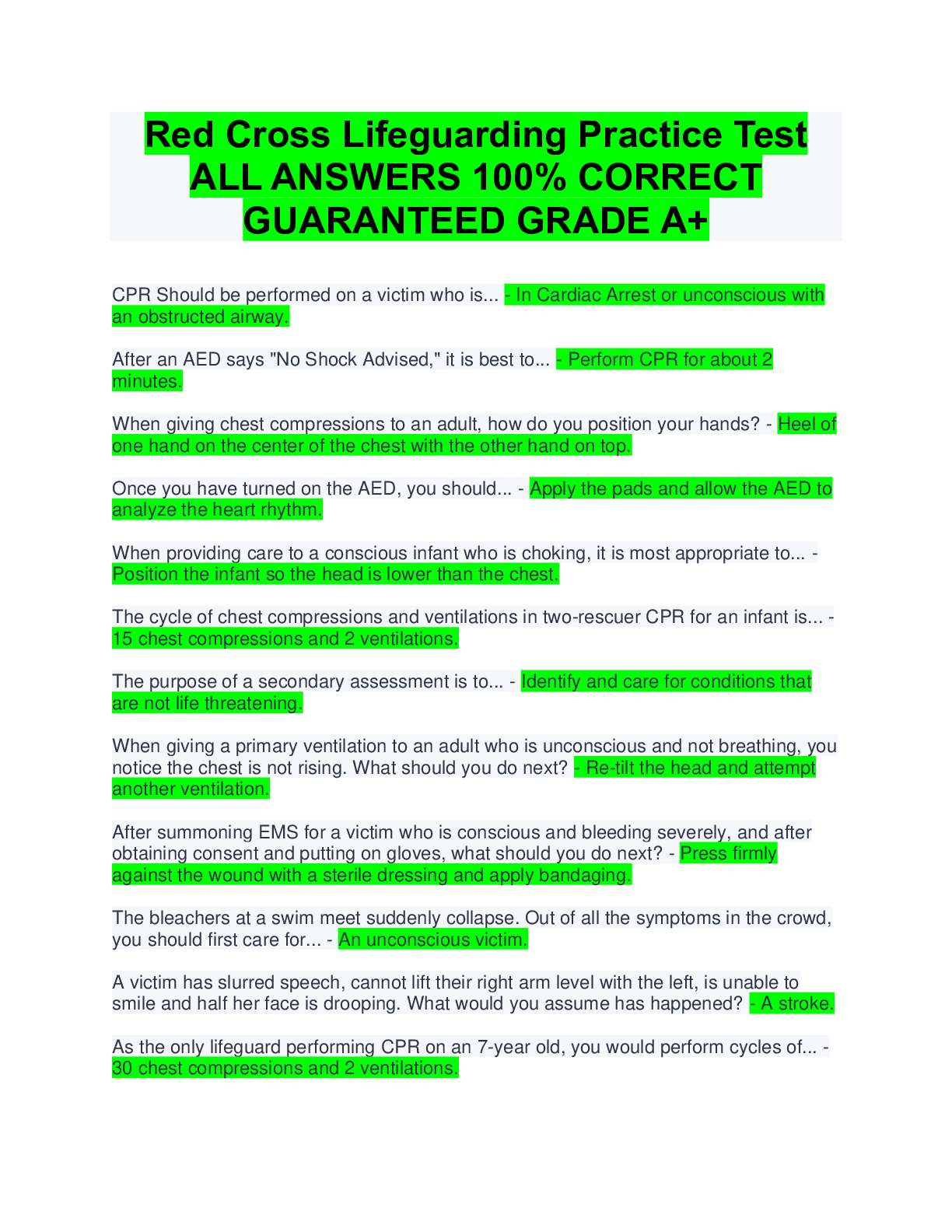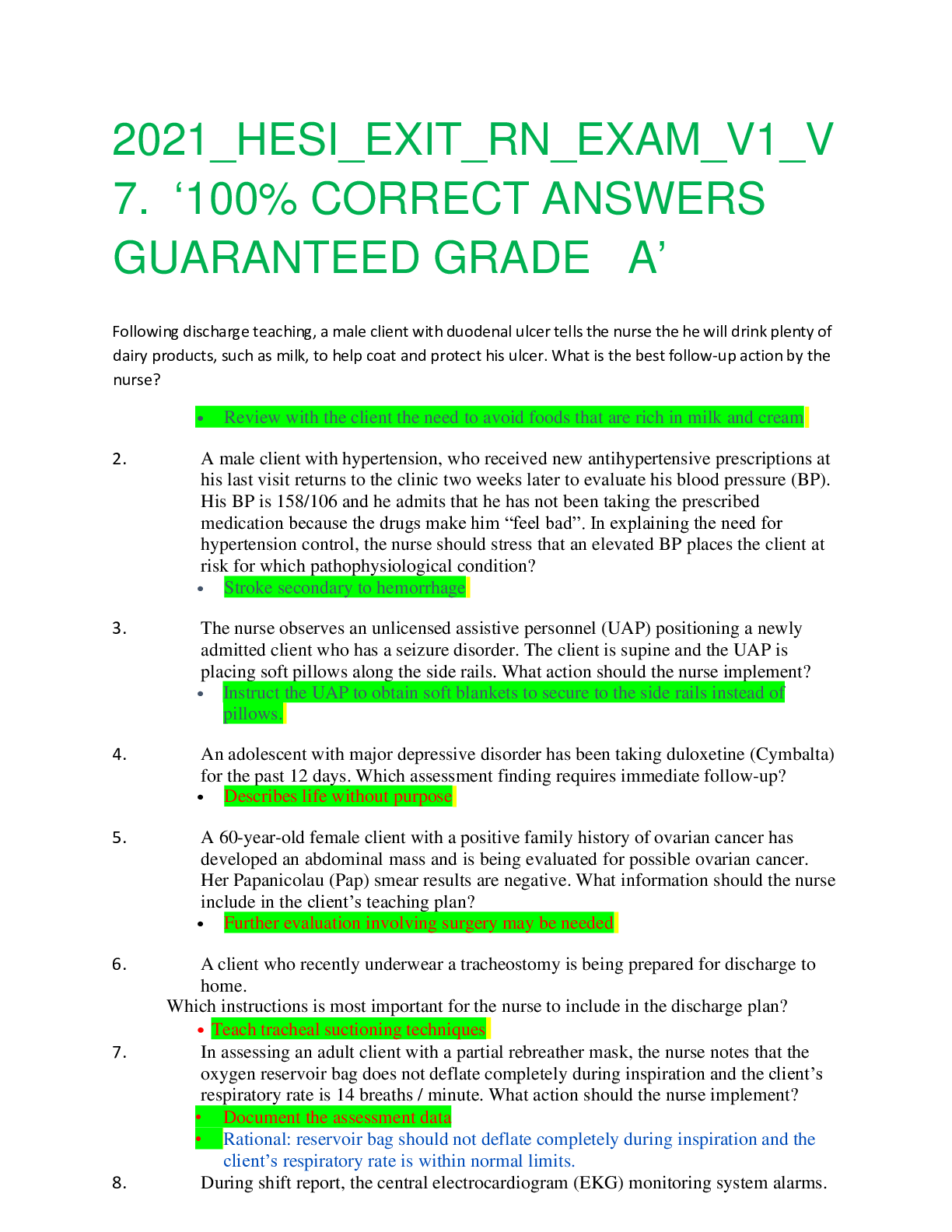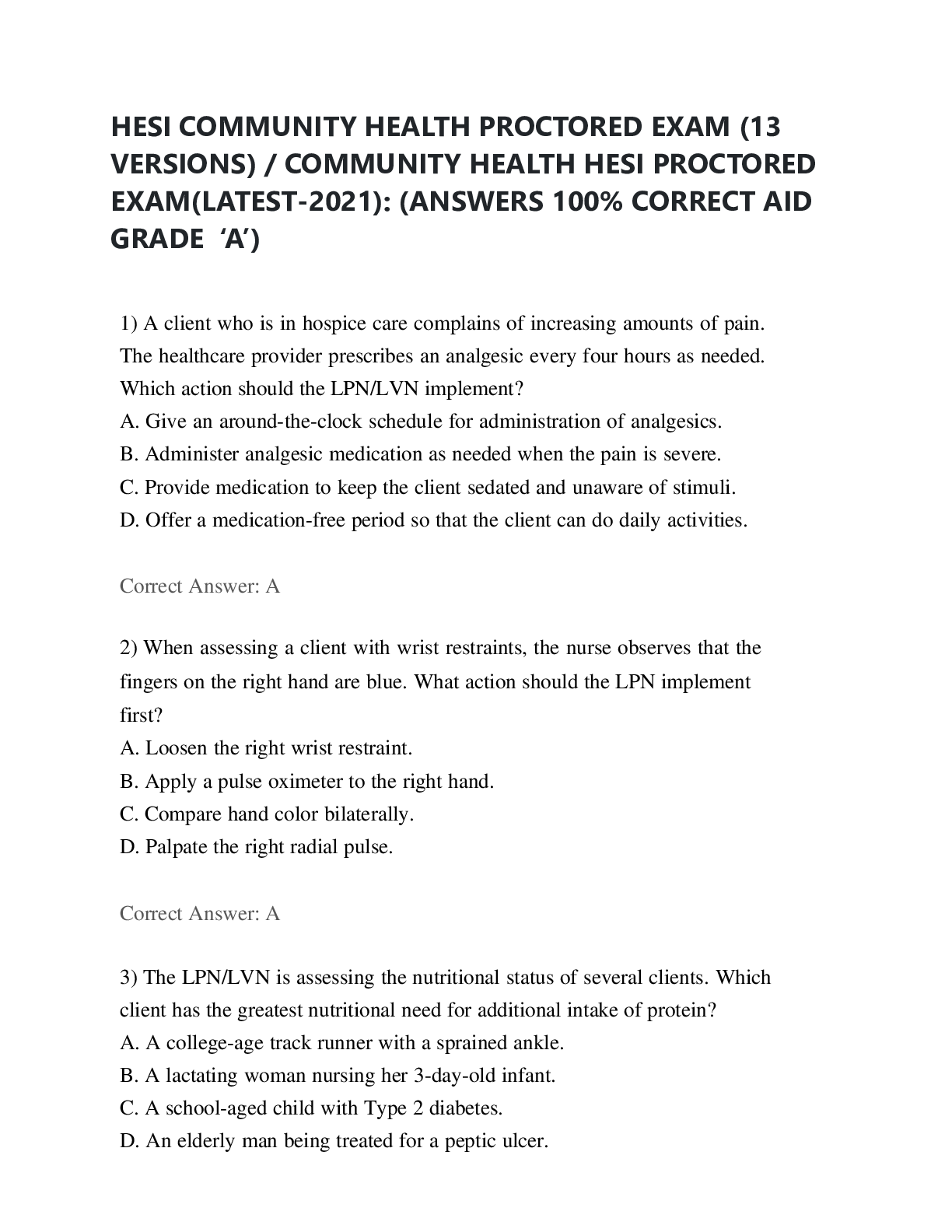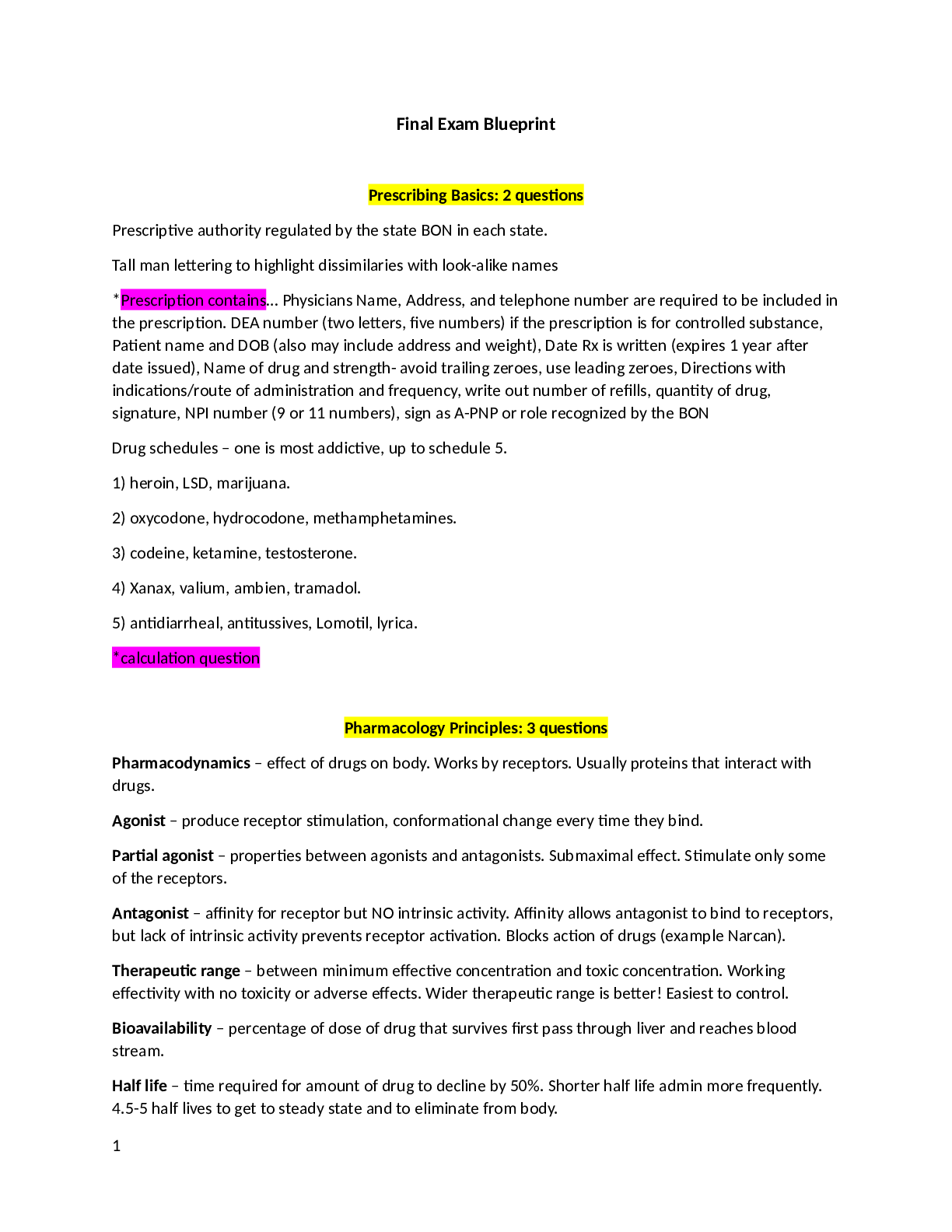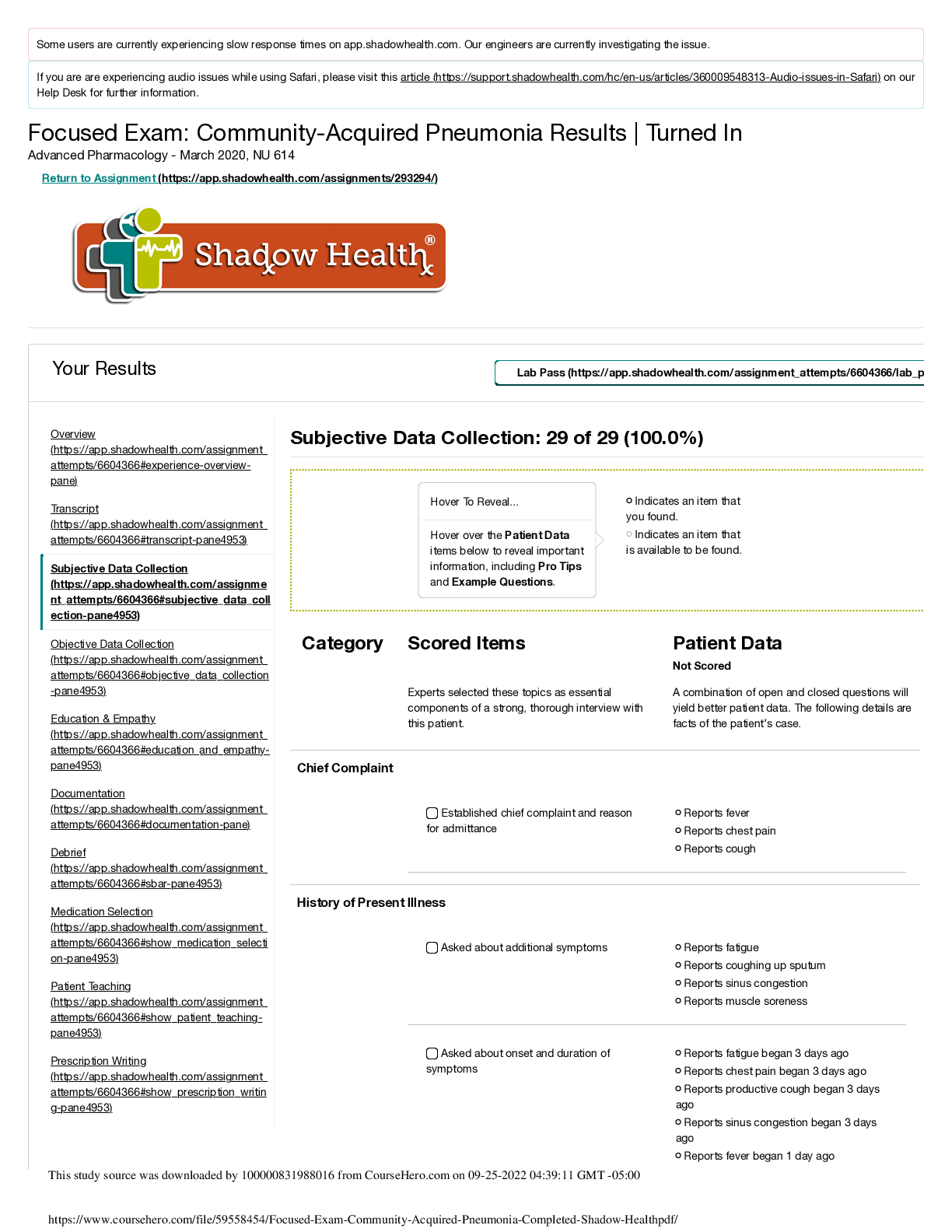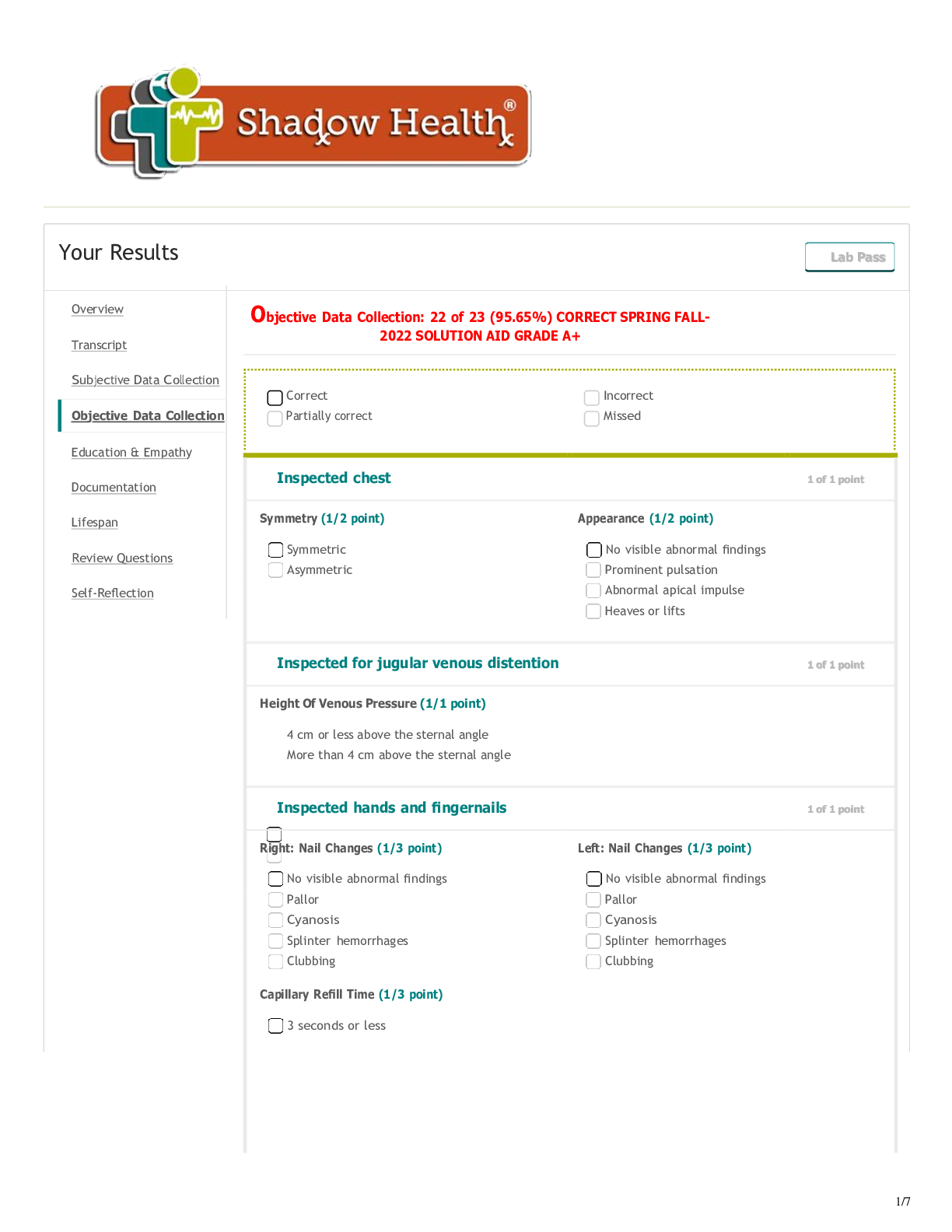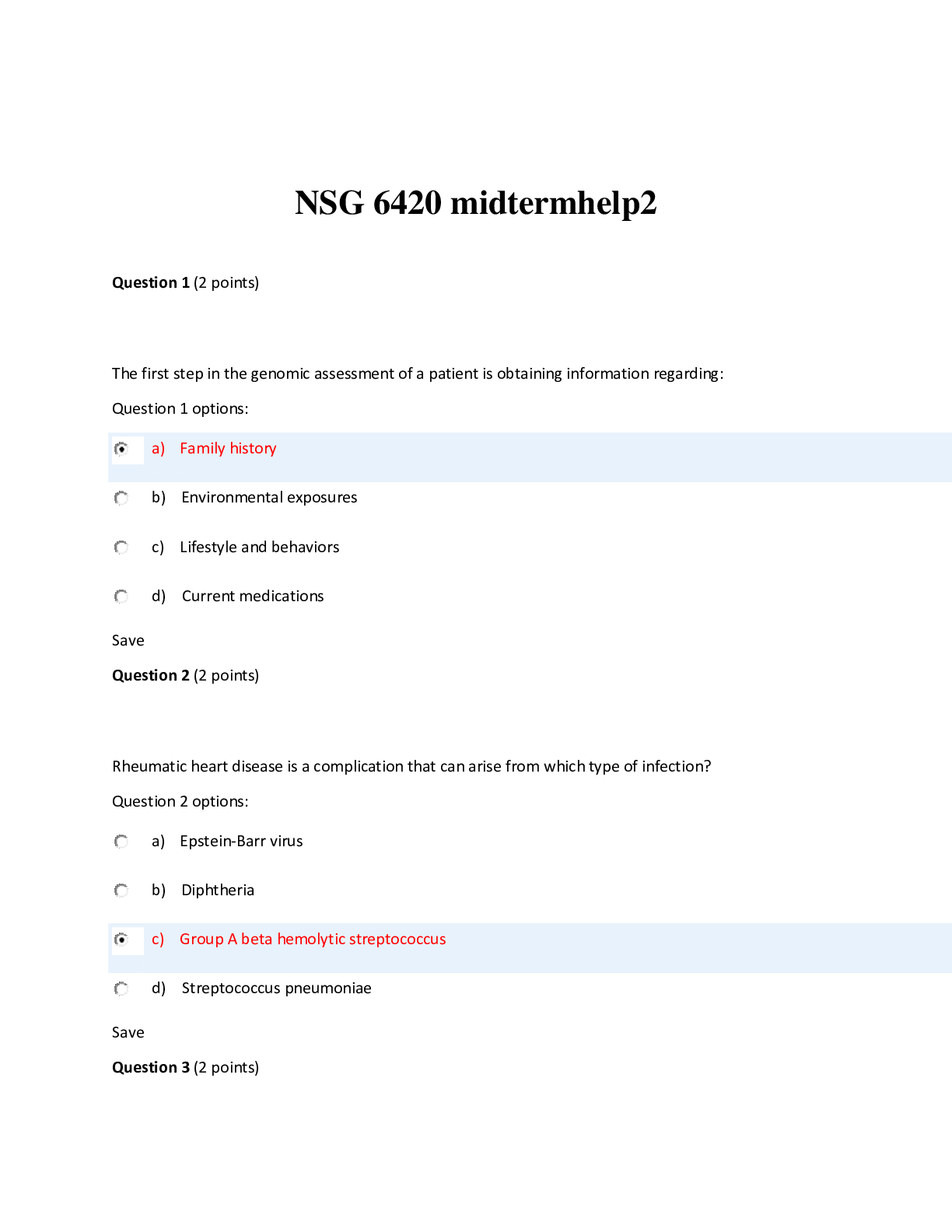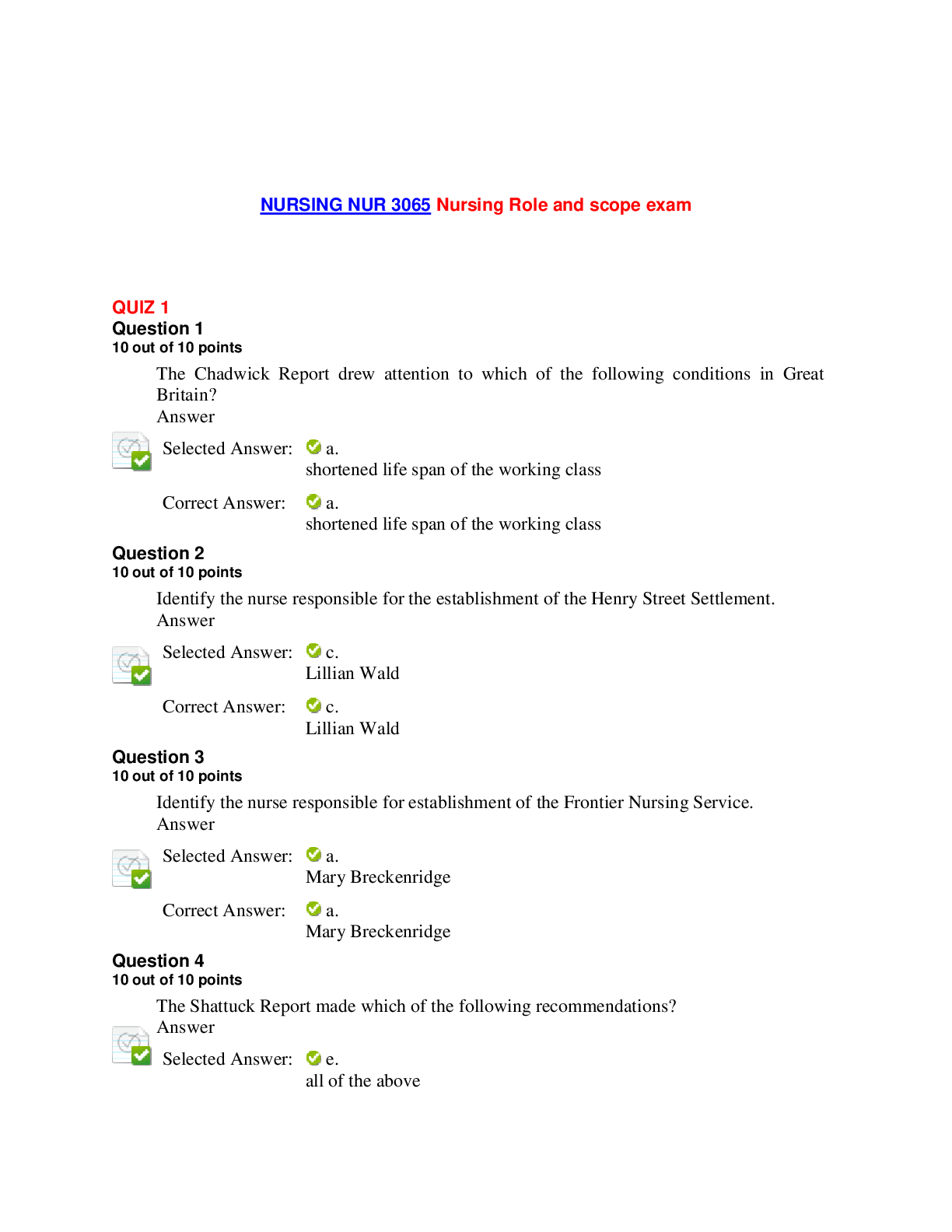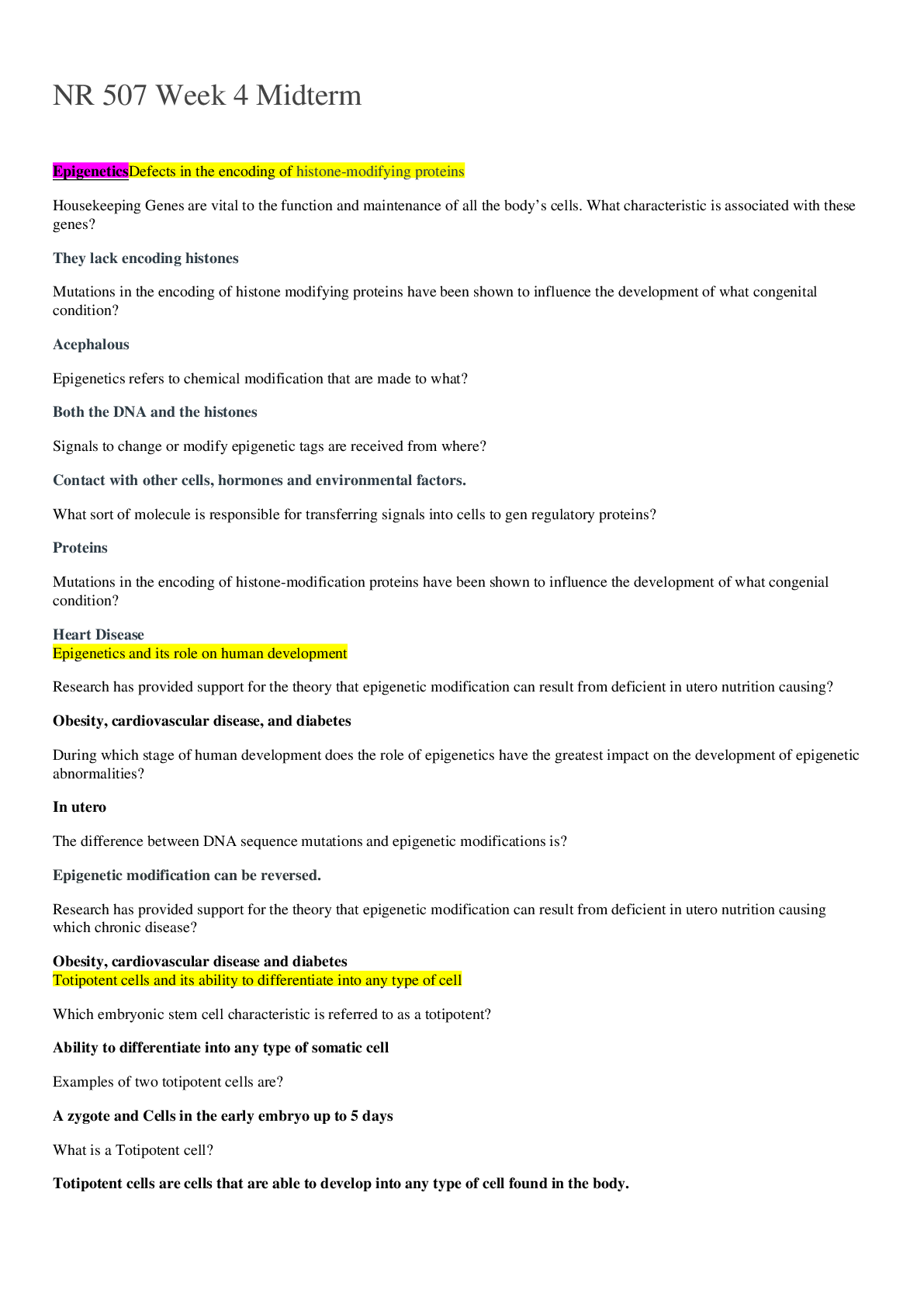Management > EXAM > CHAPTER 13 HOMEWORK ESSENTIALS OF ENTREPRENEURSHIP & SMALL BUSINESS MGMT., 7E (SCARBOROUGH) ALL ANSW (All)
CHAPTER 13 HOMEWORK ESSENTIALS OF ENTREPRENEURSHIP & SMALL BUSINESS MGMT., 7E (SCARBOROUGH) ALL ANSWERS 100% CORRECT SPRING FALL-2022 LATEST SOLUTION GARANTEED GRADE A+
Document Content and Description Below
1) Entrepreneurs needing between $100,000 and $3 million in the current financial environment will likely find acquiring financing to be: A) challenging. B) confusing. C) attainable. D) easy. Answ... er: A Diff: 2 Page Ref: 469 AACSB: Reflective Thinking Learning Obj.: 1 2) Unlike entrepreneurs of the past, today's entrepreneurs: A) are finding more government interest and funding for business start-ups than in the past decade. B) find fewer closed doors as small business start-ups have become less risky. C) have to piece their capital together from several sources. D) are spending a smaller percentage of their time raising capital for their businesses. Answer: C Diff: 2 Page Ref: 439 AACSB: Analytic Skills Learning Obj.: 1 3) When searching for capital to launch their companies, entrepreneurs should remember several "secrets" to successful financing. Which of the following is not one of those secrets? A) Choosing the right sources of capital can be just as important as choosing the right form of ownership or the right location. B) The money is out there, but the key is knowing where to look. C) Creativity counts when searching for financing. D) Raising money should not take very long; therefore, if it does not come quickly, it probably will not come at all. Answer: D Diff: 1 Page Ref: 469-470 AACSB: Analytic Skills Learning Obj.: 1 4) The Kauffman Foundation reports that the average amount of capital that entrepreneurs use to start small businesses in the U.S. is nearly: A) $25,000. B) $50,000. C) $80,000. D) $100,000. Answer: C Diff: 3 Page Ref: 471 AACSB: Analytic Skills Learning Obj.: 1 5) Which of the following represents capital? A) Inventory B) Equipment and machinery C) Cash D) All of the above Answer: D Diff: 1 Page Ref: 471 AACSB: Analytic Skills Learning Obj.: 1 6) The primary disadvantage of equity capital is that the entrepreneur: A) must repay it at some point with interest. B) must give up some-perhaps most-of the ownership in the business to outsiders. C) experiences the disadvantage of the risk/return tradeoff in the form of higher interest rates. D) B and C above Answer: B Diff: 3 Page Ref: 471 AACSB: Analytic Skills Learning Obj.: 1 7) The primary advantage of equity capital is: A) its lower interest rate. B) that it is readily available to a large number of entrepreneurs from a variety of lenders. C) that it does not have to be repaid like a loan does. D) that it does not appear on a company's balance sheet. Answer: C Diff: 2 Page Ref: 471 AACSB: Analytic Skills Learning Obj.: 1 8) Entrepreneurs are most likely to give up more equity in their businesses in the phase of their companies than in any other. A) startup B) product development C) product testing D) product shipping Answer: A Diff: 2 Page Ref: 403-404 AACSB: Analytic Skills Learning Obj.: 1 9) The first place an entrepreneur should look for startup capital is: A) a bank. B) a venture capitalist. C) the Small Business Administration. D) his own savings. Answer: D Diff: 1 Page Ref: 472 AACSB: Analytic Skills Learning Obj.: 2 10) A method of raising capital that taps the power of social networking and allows entrepreneurs to post their elevator pitches and proposed investment terms on specialized Web sites and raise money from ordinary people who invest as little as $100 is called: A) crowd funding. B) angel financing. C) venture capital. D) bootstrapping. Answer: A Diff: 1 Page Ref: 474 AACSB: Reflective Thinking Learning Obj.: 2 11) The largest single source of external equity capital for small businesses is: A) angels. B) venture capitalists. C) Small Business Administration loans. D) the stock market; i.e., "going public." Answer: A Diff: 2 Page Ref: 474 AACSB: Communication Learning Obj.: 2 12) When looking for an angel, the key is: A) networking. B) waiting until you need the money. C) looking across industries. D) using computer matches. Answer: A Diff: 2 Page Ref: 476 AACSB: Communication Learning Obj.: 2 13) Angels are an excellent source of money, often willing to wait years or longer to cash out their investment. A) immediate; 5 B) patient: 7 C) long-term; 10 D) passive; 20 Answer: B Diff: 2 Page Ref: 476 AACSB: Analytic Skills Learning Obj.: 2 14) The general trend of angel financing is that it has as a source of capital for entrepreneurs over the past 9 years. A) increased B) stabilized C) decreased D) disappeared Answer: A Diff: 2 Page Ref: 476, Figure 13.2 AACSB: Analytic Skills Learning Obj.: 2 15) Which of the following is not a characteristic of a typical angel investor? A) Investing money locally B) Purchasing majority ownership in the company C) Investing in the startup phase of the company D) Willing to wait seven years or more to cash out an investment Answer: B Diff: 2 Page Ref: 474-478 AACSB: Reflective Thinking Learning Obj.: 2 16) Before entering into any partnership arrangement, entrepreneurs must consider: A) the partnership will only have an impact on sharing profits. B) what interest rate the partner is expecting. C) the impact of giving up some personal control and sharing profits with others. D) the ramifications of having another person on the payroll. Answer: C Diff: 2 Page Ref: 478-479 AACSB: Communication Learning Obj.: 2 17) A/An is a private, for-profit organization that purchases equity positions in young businesses that will potentially produce returns of 300 to 500 percent over five to seven years. A) commercial bank B) venture capital company C) angel D) SB-1 filing Answer: B Diff: 1 Page Ref: 479 AACSB: Analytic Skills Learning Obj.: 2 18) The average venture capital firm screens about investment proposals each year and ultimately invests in of them. A) 10,000; 12 B) 1,000; 1 C) 5,000; 13 D) 5,000; 80 Answer: B Diff: 3 Page Ref: 480 AACSB: Analytic Skills Learning Obj.: 2 19) Although there is no limit on the amount of stock it can buy, a typical venture capital firm will purchase less than percent of the ownership in a small firm. A) 21 B) 50 C) 70 D) 80 Answer: B Diff: 3 Page Ref: 481 AACSB: Analytic Skills Learning Obj.: 2 20) Venture capitalists look for as the most important ingredient in the success of any business. A) innovation B) a growth industry C) a competitive edge D) competent management Answer: D Diff: 2 Page Ref: 482 AACSB: Analytic Skills Learning Obj.: 2 [Show More]
Last updated: 2 years ago
Preview 1 out of 48 pages

Buy this document to get the full access instantly
Instant Download Access after purchase
Buy NowInstant download
We Accept:

Reviews( 0 )
$12.50
Can't find what you want? Try our AI powered Search
Document information
Connected school, study & course
About the document
Uploaded On
Jun 11, 2022
Number of pages
48
Written in
Additional information
This document has been written for:
Uploaded
Jun 11, 2022
Downloads
0
Views
122

